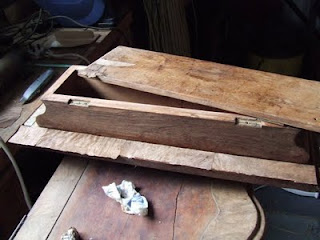Okay, so tedious work has got the better of me, waiting for glue to dry and newly laid veneer to settle is time consuming to say the least! The Davenport desk is coming along well, albeit slowly - having eleven pre-woven cane panels to replace in the meantime just adds to the monotony - but I'm not complaining, it's good to be busy.
Back to the uses of Scirpus lacustris, the amazing rush/cattail plant...............
In many places throughout history in England, rush festivals were held to celebrate the new harvest each year. Come the end of July, private homes, churches and other public buildings would remove all of the old rush material from the floors of their buildings and replace it with the new seasons crop. Rush, (as anyone who has used it knows) smells wonderful, just like newly mown hay or sweet tobacco. So imagine - you clear out the one year old soiled rush from the floor and replace it with the new highly scented, (and antiseptic) new material - a good reason for celebration! The population had a real excuse for a good knees up.
Then there were rush lights. Bundles of rush soaked in "tallow" or clarified animal fat. Large rush lights could provide all of the light needed in the cavernous buildings of the past.
Of course, chair seating we all recognise as a sensible and practical use of rush, a skill practised for centuries throughout the world in lots of different ways. Then there is basket making. Near to us here over the border in Hampshire, lunch baskets of a particular design were woven for the farm workers as well as other baskets to carry goods around, plaited floor mats kept the dust down in homes. Place mats and hats were also easy to make, functional and popular. Rush is such a sympathetic material.
Flooring, medicine, baskets, clothing, lighting.........a spectacular plant indeed.











